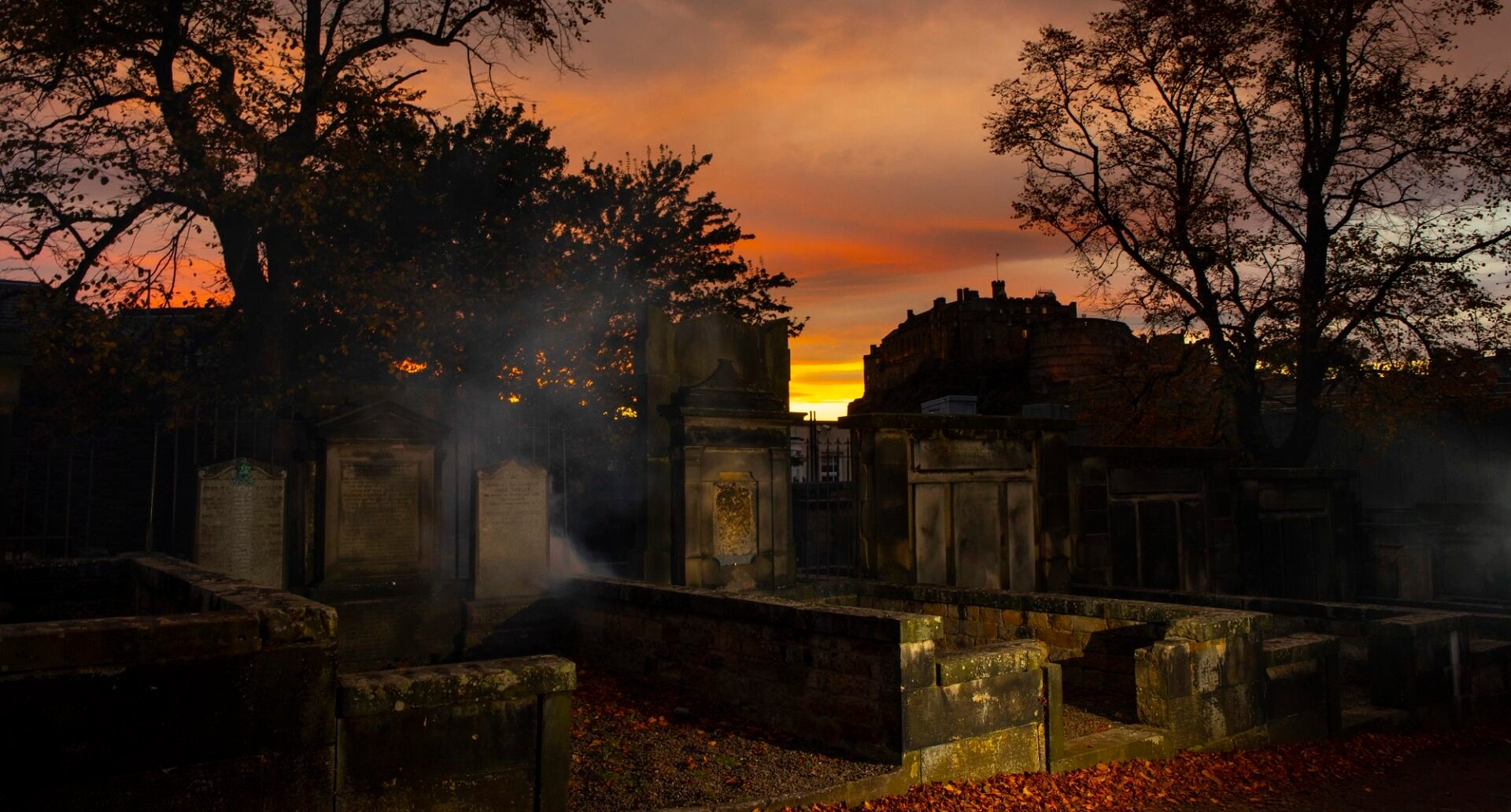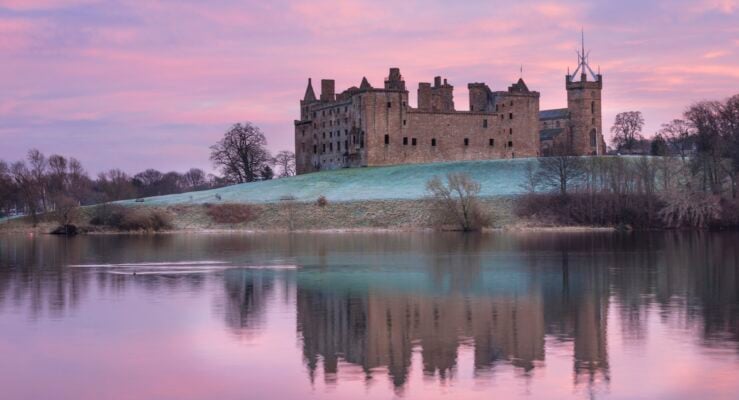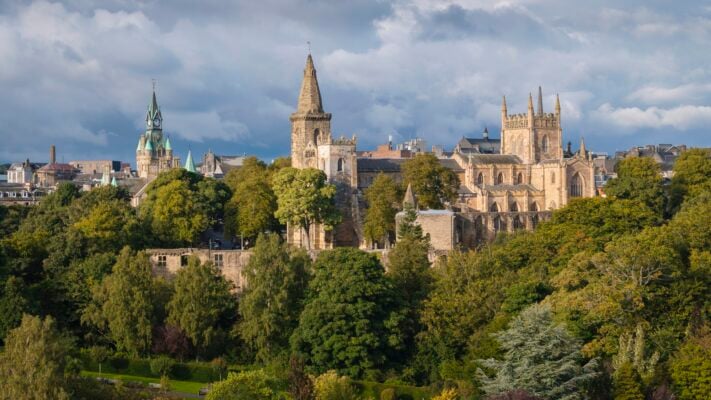Considered one of the most haunted places in Europe, Edinburgh is alive with spooky tales!
From malevolent spirits and graverobbers, to the inspiration behind some of the names found in Harry Potter, Edinburgh’s graveyards certainly have one or two tales lurking between the headstones. So, join us as we explore some of the stories that haunt Edinburgh to this day.
We promise, we’ll try not to scare you too much!
Greyfriars Kirkyard
Built on the site of a pre-Reformation Franciscan monastery, Greyfriars Kirk was founded in 1620, the first church to be built in post-Reformation Scotland.
Today, the Kirkyard is famous in its own right as every year thousands of visitors come to visit two memorials in particular. The first being the grave of Tom Riddell, who as all well-versed Muggles know, is the name of “He who must not be named”, aka Lord Voldemort. Come rain or shine, devoted Harry Potter fans flock to the Kirkyard to pay homage to the grave that many believe inspired the name of the series’ leading baddie.
Discover more about all-thing Potter in our guide to The Ultimate Harry Potter Guide to Edinburgh
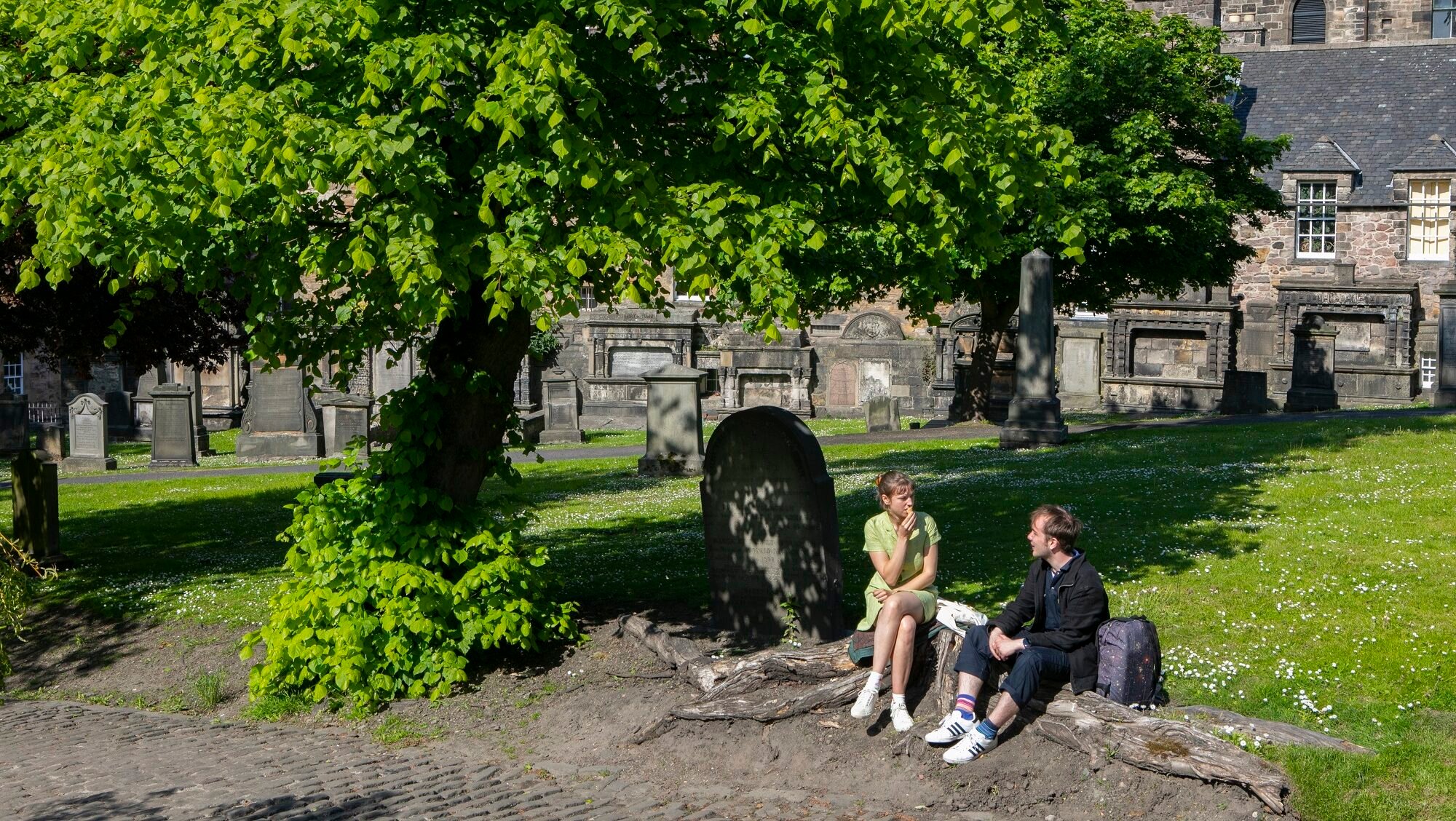
The second highly-visited memorial belongs not to a human, but to a dog – specifically, that of Greyfriars Bobby. A Terrier who was looked after by local policeman John Gray, after John’s death, Bobby reportedly guarded his master’s grave for 14 years.
A granite memorial to Bobby sits opposite the main gate of the Kirkyard and it’s not uncommon to see sticks, dog toys and treats here, placed by doting dog lovers. Bobby’s collar and bowl are also on display at the nearby Museum of Edinburgh.
But Greyfriars Kirkyard also has some more grisly tales – and these ones are guaranteed to send a shiver down your spine!
The MacKenzie Poltergeist
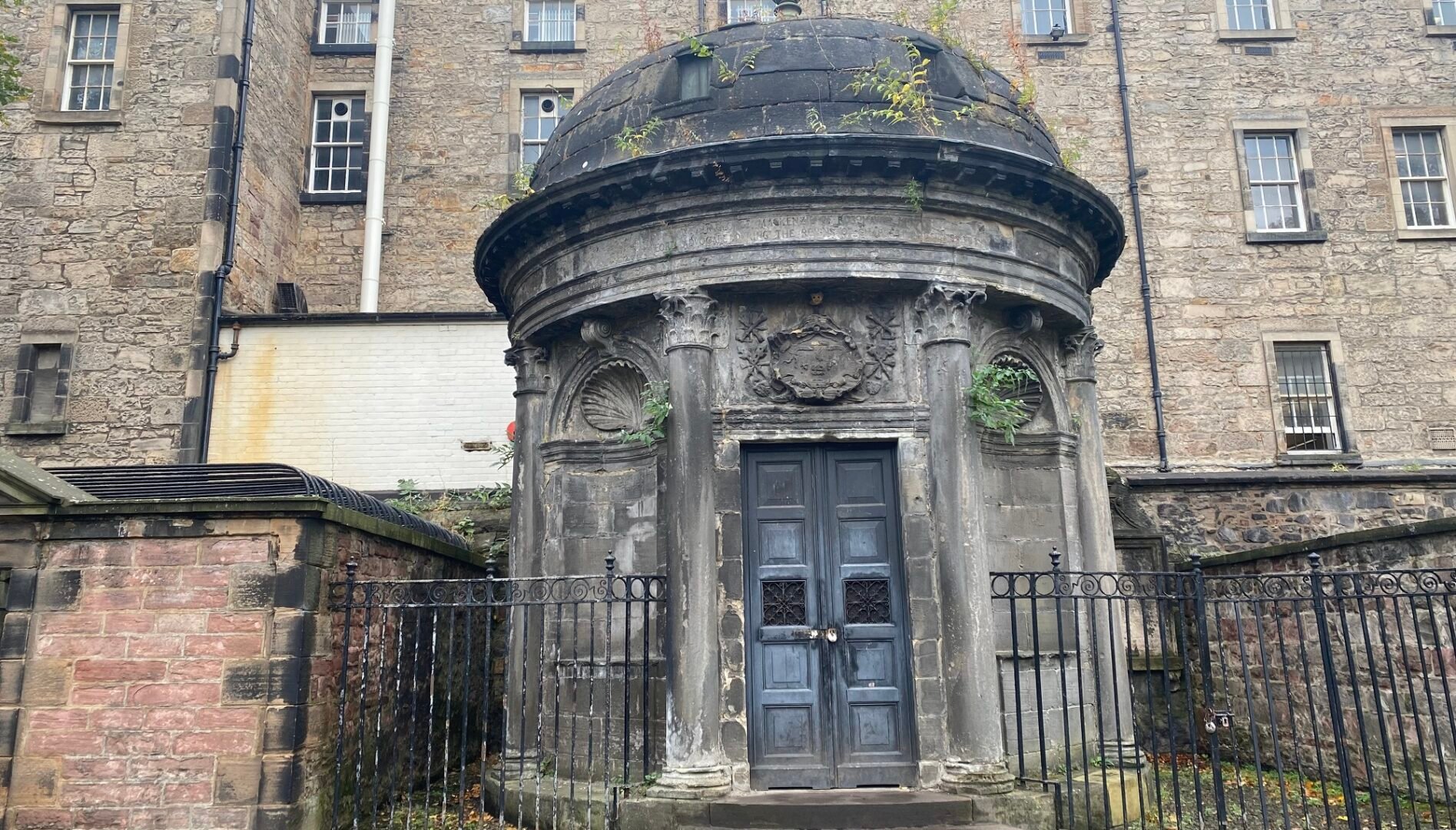
A lawyer and the Lord Advocate during the rule of Charles II, George Mackenzie was a ruthless man who quickly earned a reputation as one of the most vicious persecutors of the Covenanters, the people who rose up and signed the National Covenant in 1638. On his orders, several hundred men were imprisoned in the Covenanters Prison in Greyfriars Kirkyard, where the brutal treatment they received quickly earned Mackenzie the nickname “Bluidy” or “Bloody” Mackenzie.
On his death in 1691, Mackenzie was laid to rest in a grand mausoleum, ironically only yards from the Covenanters’ Prison, where so many suffered at his orders.
But it is believed Mackenzie did not pass quietly into the afterlife.
In 1999, a homeless man sought shelter in Mackenzie’s mausoleum and fell through the floor, and in 2003 two teenagers broke into the tomb and stole Mackenzie’s head – both acts supposedly waking up the ghost of “Bluidy Mackenzie”.
Since then, visitors have reported ghostly activity around the tomb, including scratches and bruises. Could “Bluidy Mackenzie” still be intent of causing horror in death as he was in life?
If you want to find out for yourself, why not book a tour on The City of the Dead Haunted Graveyard Tour
Grave robbing

In the early 1800’s Edinburgh was at the centre of the Scottish Enlightenment, with medicine an esteemed occupation.
But in order to hone student’s skills, a steady supply of cadavers was required. The main legal source of obtaining bodies for dissection was that of convicted and executed criminals, but the demand for bodies far outstripped the supply.
The shortfall was increasingly met by the activities of a group of unsavoury characters known as graverobbers. Venturing into Edinburgh’s graveyards at nightfall, they would dig up the fresh graves and sell the bodies to the medical school.
To stop this happening, desperate relatives set up watch groups which patrolled the graveyards. The wealthier built mortsafes, elaborate cage-like tombs over their relative’s graves (two of which can still be seen today in Greyfriars Kirkyard) as well as watch houses and towers. Bobby’s Bothy is an example of this – dating from around 1830, it served as somewhere where relatives could keep a watchful eye, sometimes up to a month at a time, or until the body would be useless for medical use.
Grave robbing continued to be a problem until 1832 when The Anatomy Act was introduced and gave physicians and students legal access to corpses that were unclaimed after death, in particular those who died in prison or the workhouse.
Edinburgh’s historic graveyards
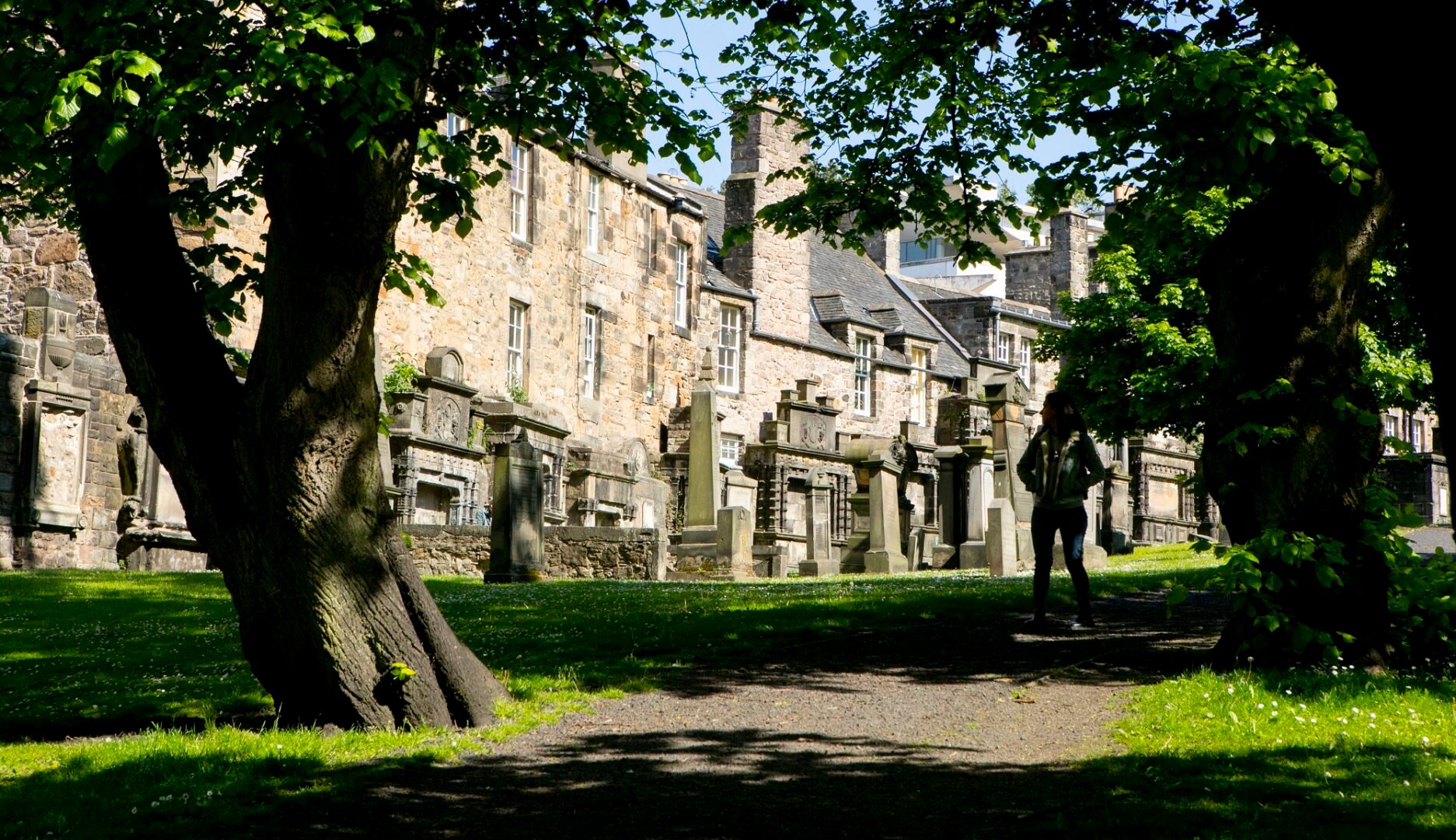
Although somewhat unusual, a wander round Edinburgh’s historic graveyards is a great way to uncover more about the city’s past and its people. Our top recommendations include:
Dating from the early 18th century, several notable people of Edinburgh’s history rest in Old Calton Burial Ground including architect Robert Burn, publisher William Blackwood and artist David Allan. It’s also home to the only monument to the American Civil War outside of the United States. In 1820 when Old Calton Burial Ground became full, a watchtower was built to deter potential graverobbers, which can still be seen at the entrance to New Calton Graveyard.
Believed to be the oldest Christian site in Edinburgh, a wander round The Parish Church Of St Cuthbert reveals many breath-taking monuments, while Canongate Kirk is the last resting place of town planner George Drummond, philosopher Dugald Stewart and poet Robert Fergusson.
Burke and Hare
If you lived in Edinburgh between 1827 and 1828, two characters you certainly would not want to bump into were William Burke and William Hare.
At a time when graverobbing was at its peak, Burke and Hare decided a more efficient of obtaining a ready supply of bodies would be to lure potential victims into their lodgings, kill them and sell the bodies to Dr Knox, a prominent anatomy lecturer, who gladly accepted them on a no-questions-asked basis.
The ghastly duo murdered at least 16 people, although it has been speculated that this figure could be as high as 30.
Their crimes eventually caught up with them and in November 1828 they were arrested.
Hare agreed to testify against his partner in crime in return for his own immunity. Burke was found guilty and sentenced to death by hanging on 29 January 1829 – a public event that reportedly attracted as many as 25,000 people.
In an ironic twist of fate, the judge ordered that Burke’s body should also be given to the University of Edinburgh. The public dissection proved to be the best-attended lecture in the history of Edinburgh’s medical school, so much so that a minor riot broke out when hundreds of students turned up to witness the spectacle!
Burke’s skeleton was given to the University of Edinburgh’s Anatomical Museum, where it remains to this day. His death mask and a book bound with his skin can be seen at Surgeons’ Hall Museums.
Today, if you fancy frequenting one of the city’s watering holes, the White Hart Inn is said to be the pub used as a hunting ground for some of their unsuspecting victims. The clientele is much better these days though!
Deacon Brodie
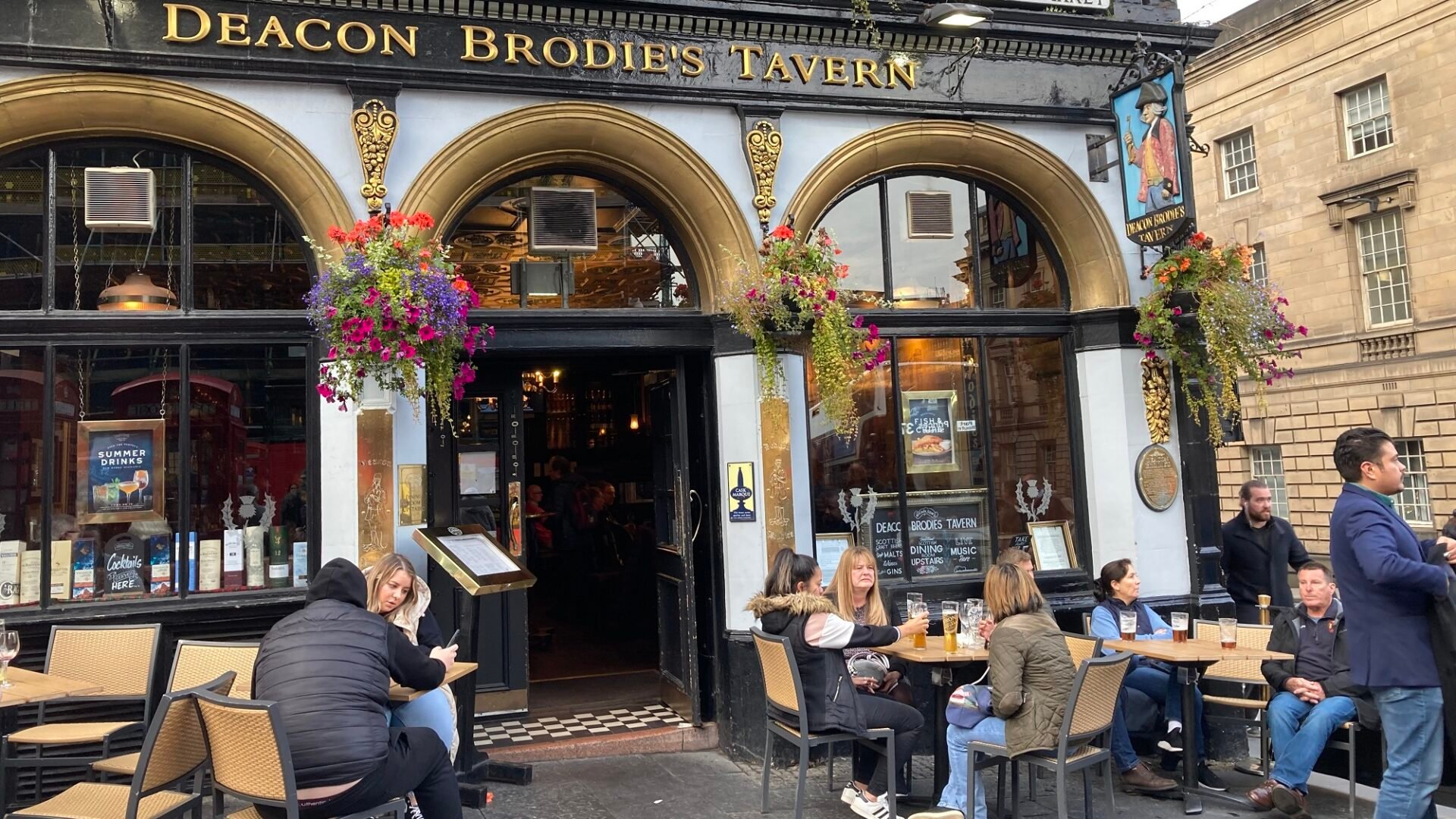
Sometimes appearances can be deceptive, and this is defiantly true in the case of William Brodie, most commonly known as Deacon Brodie.
Deacon of the Guild of Wrights and Masons and an Edinburgh City Councillor, underneath this respected façade, he hid a dark secret.
A skilled cabinet maker, he was also a talented locksmith and it was this knowledge that he used to his advantage. While working within the houses of Edinburgh’s high society he would copy their keys using wax impressions, allowing him to return under cover of darkness and rob them.
In 1788, after carrying out his most daring crime yet – a raid on Edinburgh’s Excise Office, he was caught, found guilty and sentenced to execution. Ironically the gallows used were the ones which he himself had only recently redesigned!
It is said Edinburgh author Robert Louis Stevenson, whose father owned a cabinet made by Brodie, used the criminal’s double life as the inspiration for his novel Dr Jekyll and Mr Hyde, which was published a century later. Today, you can see that very cabinet in The Writers’ Museum, while a lantern and 25 lock picks used in evidence against Brodie are now part of the collection at The National Museum of Scotland.
The next time you’re on the Royal Mile and hunger strikes, stop by Brodie Close. In the 18th century it was the site of the Brodie family’s home; today it serves as Deacon’s House Café, where visitors are treated to a tasty range of all-day light bites and home baking. Or pop across the road to Deacon Brodies Tavern – a traditional bar which originates from 1806 and is named after the infamous crook.
Explore 6 of the spookiest bars in Edinburgh
If you like your drink shaken and stirred, don’t miss a trip to the Edinburgh bars where spirits of a different kind are found!
